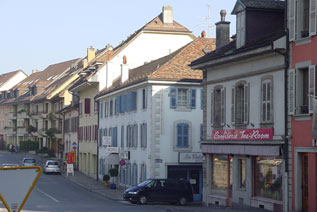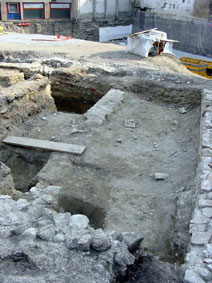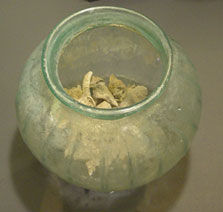Come with us on a walking tour of Nyon...
1. place Perdtemps
Introduction
|
The
Archaeology Walk
|
|
|
More
places to visit
|
|
 |
||
|
|
The
English text reads: Nyon, Roman colony - About 45 BC, shortly after the conquest of the Gauls, the Romans founded Colonia Iulia Equestris on the shores of Lake Geneva, between the Gex region, the Jura and Aubonne. Noviodunum, the urban canter of this territory was built on the very site of the present town of Nyon. Archaeological investigations are regularly carried out here during building and civil engineering projects. It has been possible to preserve the basilica of the forum, which has housed the Roman Museum since 1979, and the amphitheater, discovered in 1996, but most of the unearthed remains are recorded and then reburied. The most important of these are indicated by flagstones on the roads. |
|
 |
The
Grand Rue, which follows the same trace as the Roman's cardo maximus,
or "main road". On the map above, it is the road marked near
number 5.
|
|
 |
||
|
|
Work shopped for an archeological exploration of a building site at Place Perdtemps in the summer of 2003. Roman and medieval walls were found, photographed, mapped, and destroyed as the new building continued. |
A series of walls from Roman houses built in two, or perhaps three, successive stages were found here, along with some coins and ceramics Read
(in French) articles, in the local newspaper, La
Côte, about this work. |
 |
One of the glass urns from a cremation tomb found in place Perdtemps that can be seen in Nyon's Roman Museum. | |
|
the
Rhone River
|
This page was updated on 24 April, 2004 by K. Epps
Unless
otherwise mentioned, all photos are by Katharine Epps.
Sauf mention contraire les photos sont de Katharine Epps
nyon@isg-online.org